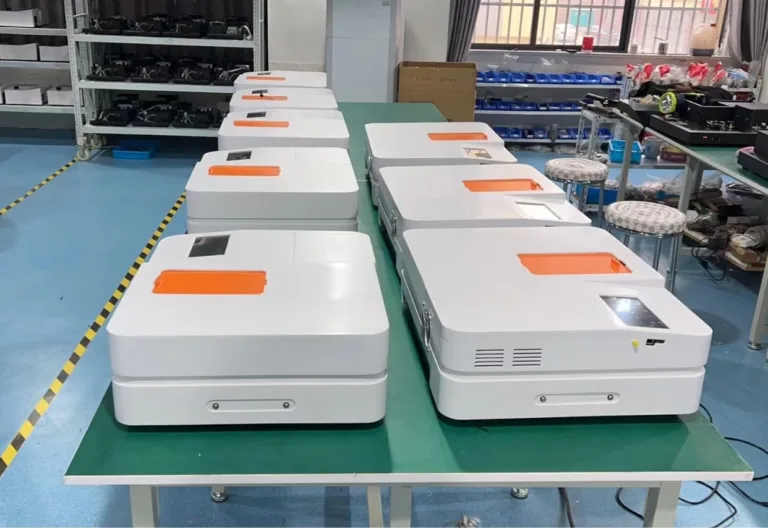
Types of Spectrophotometers
Double beam UV spectrophotometers are similar to UV spectrophotometers, but they have two beams of light that are used to measure the absorbance of a sample. One beam passes through the sample, and the other passes through a reference cuvette filled with a solvent that does not absorb UV light.
Visible Spectrophotometers
Visible spectrophotometers are used to measure the visible light absorbed or transmitted by a sample. They operate in the range of 380 to 750 nm, which is the visible spectrum of light. Visible spectrophotometers are commonly used in the analysis of colored samples, such as pigments and dyes.
The working principle of a visible spectrophotometer is based on Beer’s law, which states that the absorbance of a sample is directly proportional to its concentration. The instrument consists of a light source, a monochromator, a sample holder, and a detector. The monochromator separates the light into its individual wavelengths, and the detector measures the intensity of the light after it has passed through the sample.
UV Spectrophotometers
UV spectrophotometers are used to measure the ultraviolet light absorbed or transmitted by a sample. They operate in the range of 190 to 380 nm, which is the ultraviolet region of the electromagnetic spectrum. UV spectrophotometers are commonly used in the analysis of nucleic acids, proteins, and other biomolecules.
The working principle of a UV spectrophotometer is similar to that of a visible spectrophotometer. However, UV spectrophotometers require special UV-transparent cuvettes, as regular cuvettes can absorb UV light. Additionally, UV spectrophotometers often require deuterium lamps, which emit UV light, as the UV light emitted by tungsten lamps is limited.
Double Beam UV Spectrophotometers
Double beam UV spectrophotometers are similar to UV spectrophotometers, but they have two beams of light that are used to measure the absorbance of a sample. One beam passes through the sample, and the other passes through a reference cuvette filled with a solvent that does not absorb UV light.
The working principle of a double beam UV spectrophotometer is based on the comparison of the absorbance of the sample and the reference cuvette. By using two beams of light, the instrument can correct for any changes in the intensity of the light source or detector, which improves the accuracy and precision of the measurement.
Conclusion
Spectrophotometers are essential instruments in research and analytical laboratories. Visible spectrophotometers are used to measure the visible light absorbed or transmitted by a sample, while UV spectrophotometers are used to measure the ultraviolet light absorbed or transmitted by a sample. Double beam UV spectrophotometers are similar to UV spectrophotometers but have two beams of light to improve accuracy and precision. Understanding the different types of spectrophotometers and their applications can help you choose the right instrument for your analysis.


